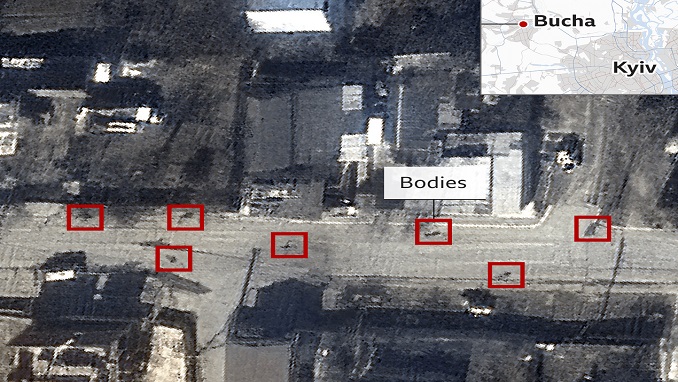
Russia has claimed that Ukrainian forces placed dead people in the town of Bucha as a part of a “staged provocation” after Russian forces had already withdrawn from the Kyiv suburb. But satellite imagery has provided a rebuttal and contradicted Russia’s false claims.
Photos taken in mid-March of the corpses’ positions match those from smartphone photographs that were published in early April, which means the massacre can be precisely dated. And that date is before Russian forces evacuated Bucha.
Earlier this week, Russia claimed that the bodies were placed on the street after forces withdrew on March 30. But now the satellite imagery has shown otherwise, ultimately proving Russia is making false claims.
Multiple analyses of the images mark the latest examples of the growing importance of satellite imagery in the documentation of war and the gathering of evidence of war crimes.
At least nine bodies were lying in the street for weeks. Many of the bodies in photographs were found with hands tied behind their backs, suggesting they were executed. There was also a mass grave site found in Bucha.
Russia has made a long series of unfounded and false claims relating to images from Bucha. Disinformation is a Russian specialty that has come into focus during the Ukraine war.
Russia has gone so far as for the Ministry of Foreign Affairs to tweet out that the bodies of the people in the images were not “stiffened” after at least four days, referring to rigor mortis, where muscles contract and stiffen hours after death.
But a forensic expert who has worked on war crimes investigations said that after four days, rigor mortis has “usually subsided.”
The Russian Ministry of Defense has also claimed that not a single local resident “suffered from any violent action” while Russian forces occupied Bucha, but this contradicts an enormous amount of eyewitness accounts.

Be the first to comment